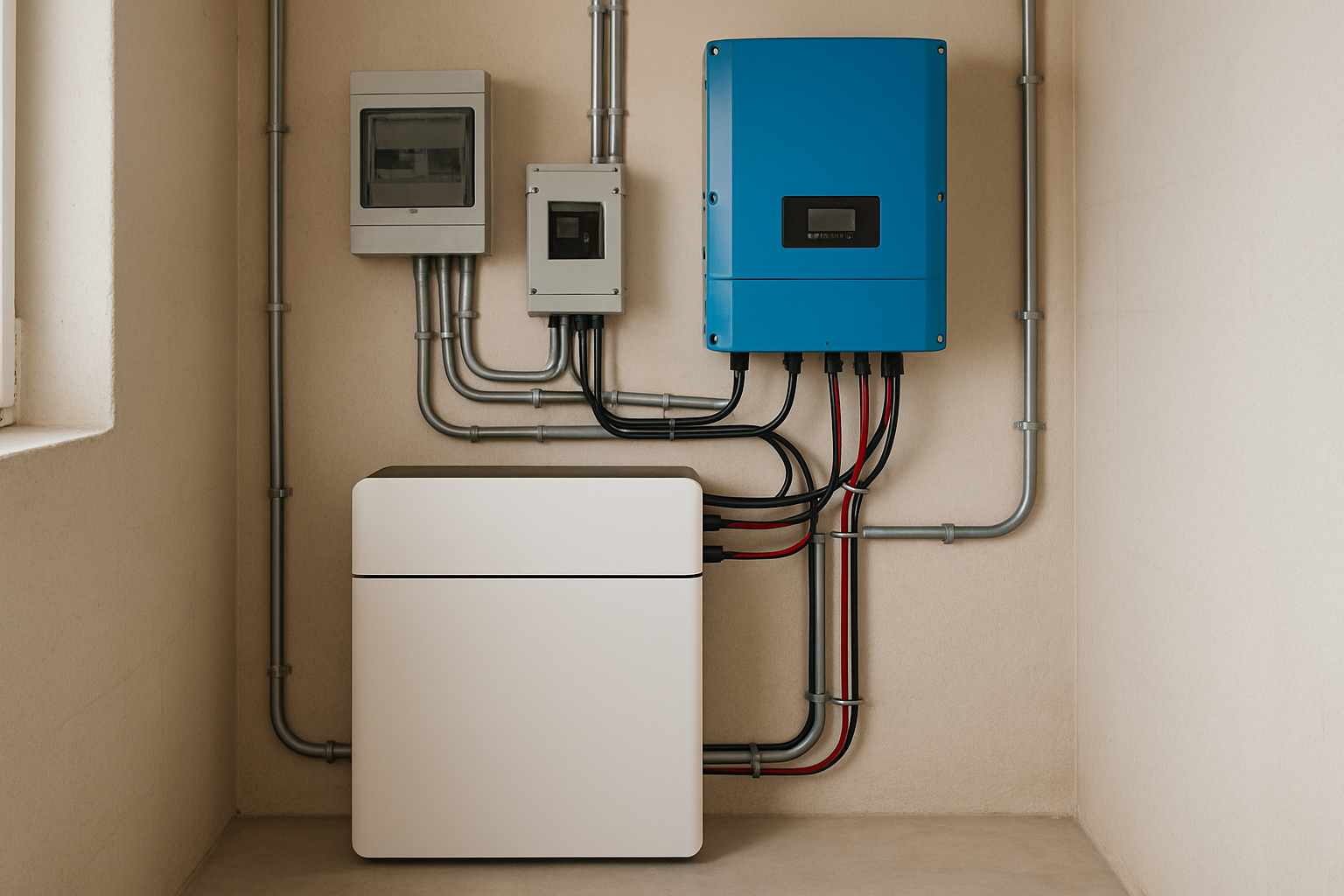Off-grid living offers unparalleled freedom, but reliable power hinges on the health of your battery bank. Deep discharge poses a silent yet significant threat, capable of drastically shortening battery lifespan and compromising your energy independence. Proactive monitoring with the right tools is not just beneficial; it is crucial for protecting your energy investment. This content provides insights into battery monitors and apps designed to prevent deep discharge, ensuring your off-grid system remains robust and dependable.
Understanding Deep Discharge: A Silent Threat to Battery Longevity
Deep discharge happens when a battery's State of Charge (SOC) falls below its recommended minimum level. For many battery chemistries, including the robust LiFePO4, consistently dropping below 20% SOC can cause significant stress. While LiFePO4 batteries tolerate deeper discharges than lead-acid counterparts, pushing them to extremely low levels repeatedly shortens their lifespan and reduces their overall performance.
Battery Chemistry and Degradation
Each battery type has a specific voltage range for safe operation. For LiFePO4 cells, the nominal voltage is 3.2V, and a typical safe minimum is around 2.5V per cell. Discharging below this can lead to copper dissolution and lithium plating, causing irreversible damage and capacity loss. This chemical degradation directly impacts the battery's ability to store and deliver energy efficiently over time.
Impact on Lifespan and System Reliability
The cycle life of a battery is directly tied to its Depth of Discharge (DoD). A LiFePO4 battery might offer 6,000 cycles at 80% DoD, but this number can decrease to 3,000 cycles or less if regularly discharged to 95% or 100% DoD. This accelerated degradation means you replace batteries more frequently, increasing your Levelised Cost of Storage (LCOS). According to Renewable Power Generation Costs in 2024, the economic viability of energy storage systems depends heavily on their operational profile and degradation rates, making careful discharge management a key factor in achieving a favorable LCOS. Furthermore, a compromised battery bank can lead to unreliable power, system shutdowns, and a loss of energy independence.

Dedicated Battery Monitors: Your System's Watchdogs
Dedicated battery monitors are precision instruments that offer a clear window into your battery bank's health. Unlike simple voltmeters, these devices provide comprehensive data, enabling precise management.
Shunt-Based Accuracy
The most reliable battery monitors utilize a shunt. This small, highly accurate resistor is placed in the main negative battery cable, allowing the monitor to precisely measure every amp-hour flowing into and out of the battery. By tracking these movements, the monitor calculates the true State of Charge (SOC) with high accuracy, often within 1-2%. This precision is crucial for preventing deep discharge, as it gives you an exact percentage of remaining energy, rather than an estimation based solely on voltage, which can be misleading under load.
Key Data Points for Proactive Care
- Real-time Voltage and Current: Instantly see how much power your system is consuming or generating.
- Accurate State of Charge (SOC): The most critical metric for deep discharge prevention, displayed as a percentage (e.g., 75%).
- State of Health (SOH): An estimate of the battery's overall capacity relative to its original design, helping you gauge its aging process.
- Battery Temperature: High or low temperatures severely impact battery performance and longevity. Monitoring this helps you take corrective action, such as improving ventilation.
- Time to Empty/Full: Based on current load or charge rate, some monitors estimate how long until the battery is empty or full, aiding in energy planning.
- Configurable Alarms: Set custom low-voltage or low-SOC thresholds that trigger audible or visual warnings, giving you time to reduce loads or activate backup charging.
Installation and Calibration for Optimal Performance
Installing a shunt-based monitor typically involves wiring the shunt in series with the main negative battery cable and connecting a sense wire to the positive terminal. Proper calibration is vital; this usually involves fully charging the battery and then synchronizing the monitor's SOC to 100%. Regular checks ensure the monitor remains accurate over time.
Battery Monitoring Apps and Smart BMS Integration: Intelligent Control at Your Fingertips
The evolution of smart technology brings battery monitoring directly to your handheld devices. Battery monitoring apps, often paired with sophisticated Battery Management Systems (BMS), provide an intuitive and accessible way to oversee your off-grid power.
Empowering Features of Monitoring Apps
- Intuitive Dashboards: Visualize critical data like SOC, voltage, current, and temperature through clear, easy-to-read interfaces on your smartphone or tablet.
- Historical Data Analysis: Review past performance to identify energy consumption patterns, peak usage times, and charging efficiencies. This data helps you optimize your energy habits and system settings.
- Remote Alerts and Notifications: Receive instant push notifications if your battery approaches a low SOC threshold, an over-current condition occurs, or temperature limits are exceeded. This remote capability is invaluable for off-grid users who might not always be near their system.
- System Control (with Smart Inverters/BMS): Some advanced apps allow you to remotely adjust inverter settings, manage charging sources, or even initiate load shedding in an emergency, directly from your device.
Seamless Integration with BMS for Enhanced Protection
The BMS is the protective core of any lithium battery, safeguarding it against conditions like overcharge, over-discharge, and extreme temperatures. When a monitoring app integrates with a smart BMS, it extends these protections to the user interface. The BMS actively prevents deep discharge by disconnecting the battery from the load when its voltage drops below a safe minimum, typically around 10% SOC or a specific cell voltage. This automatic cutoff is a critical last line of defense. Our integrated home energy storage systems combine high-performance LiFePO4 batteries with advanced BMS and hybrid inverters, providing a comprehensive solution for reliable power. The increasing deployment of battery storage globally, as highlighted by The Role of Critical Minerals in Clean Energy Transitions, underscores the importance of robust and intelligent management systems to ensure the longevity and performance of these vital assets.
Practical Strategies for Preventing Deep Discharge
Effective deep discharge prevention combines reliable monitoring tools with informed operational practices.
Configure Alarms and Respond Promptly
Set your battery monitor or app to trigger alerts when your SOC reaches a critical point, such as 20-30%. When an alarm sounds or a notification appears, assess your energy usage immediately. Reduce non-essential loads, consider activating a generator if available, or adjust solar panel orientation for maximum sun exposure. Timely action based on these alerts is your primary defense against deep discharge.
Strategic Load Management
Use the real-time data from your monitor to understand which appliances consume the most power. During periods of low solar production or high consumption, prioritize essential loads (lighting, refrigeration) over non-essential ones (high-wattage appliances). Some smart systems can automate load shedding, temporarily disconnecting less critical circuits to preserve battery life.
Regular Data Analysis and System Optimization
Review your historical data weekly or monthly. Look for patterns: do you consistently hit low SOC levels on cloudy days? Is your nighttime consumption higher than anticipated? This analysis can reveal opportunities to adjust your habits, optimize charging sources, or even indicate the need for a system expansion. For example, if your system frequently struggles, it might suggest that your solar array or battery bank is undersized for your actual energy needs, a common issue we address in off-grid solar solutions.
Maintain Optimal Operating Conditions
While monitors alert you to temperature extremes, proactive measures are better. Ensure your battery bank is housed in a well-ventilated area, protected from direct sunlight and extreme cold. Maintaining a stable operating temperature helps maximize battery efficiency and lifespan.
Securing Your Energy Future
Safeguarding your off-grid battery bank from deep discharge is fundamental to achieving lasting energy independence. By integrating dedicated battery monitors and leveraging smart monitoring applications with robust Battery Management Systems, you gain precise control and deep insight into your power system. These tools empower you to proactively manage your energy, extend the lifespan of your valuable LiFePO4 batteries, and ensure a consistent, reliable power supply for your home or property. Investing in comprehensive monitoring is a strategic step towards enhancing the resilience and efficiency of your entire off-grid energy setup.
Frequently Asked Questions
What is deep discharge?
Deep discharge occurs when a battery's State of Charge (SOC) drops below a safe, recommended threshold. For many battery types, especially LiFePO4, regularly discharging below 20% SOC is considered deep discharge and can significantly shorten the battery's lifespan.
Why is preventing deep discharge important for off-grid batteries?
Preventing deep discharge is crucial for extending the lifespan and maintaining the performance of your off-grid batteries. Repeated deep discharges can lead to irreversible capacity loss, reduce the total number of usable cycles, and ultimately compromise the reliability of your energy system.
What are the key features to look for in a battery monitor?
Look for monitors that provide accurate State of Charge (SOC), voltage, current (charge and discharge), and temperature readings. Configurable alarms for low voltage or low SOC, along with historical data logging, are also highly beneficial for proactive battery care.
How do battery monitoring apps help prevent deep discharge?
Battery monitoring apps offer real-time data visualization, historical performance trends, and often remote alerts. They allow you to easily track your battery's SOC and receive notifications when it approaches a critical level, enabling you to take action like reducing loads or initiating charging.
Can a Battery Management System (BMS) prevent deep discharge?
Yes, a smart Battery Management System (BMS) is designed to protect lithium batteries from various issues, including over-discharge. It will typically disconnect the battery from the load when the voltage drops below a safe minimum, preventing damage. Monitoring apps often interface with the BMS to provide these protection features to the user.





Leave a comment
All comments are moderated before being published.
This site is protected by hCaptcha and the hCaptcha Privacy Policy and Terms of Service apply.